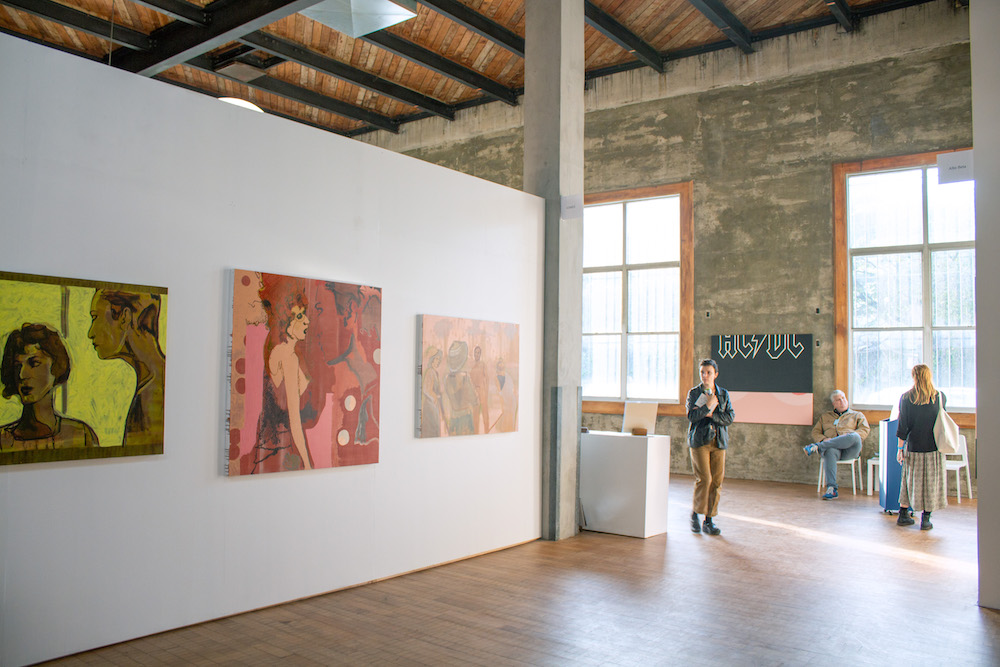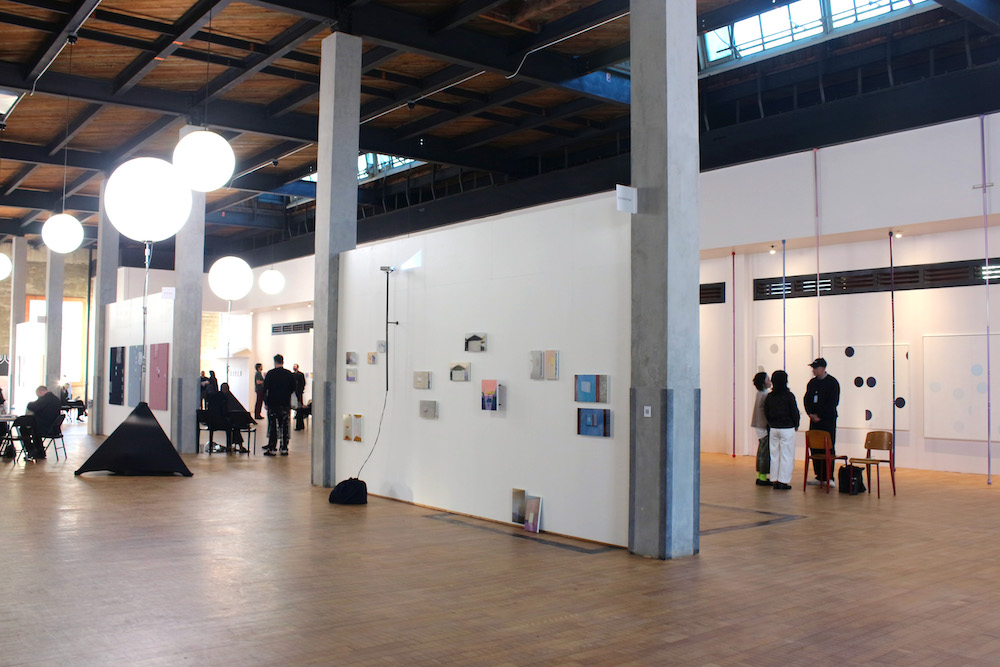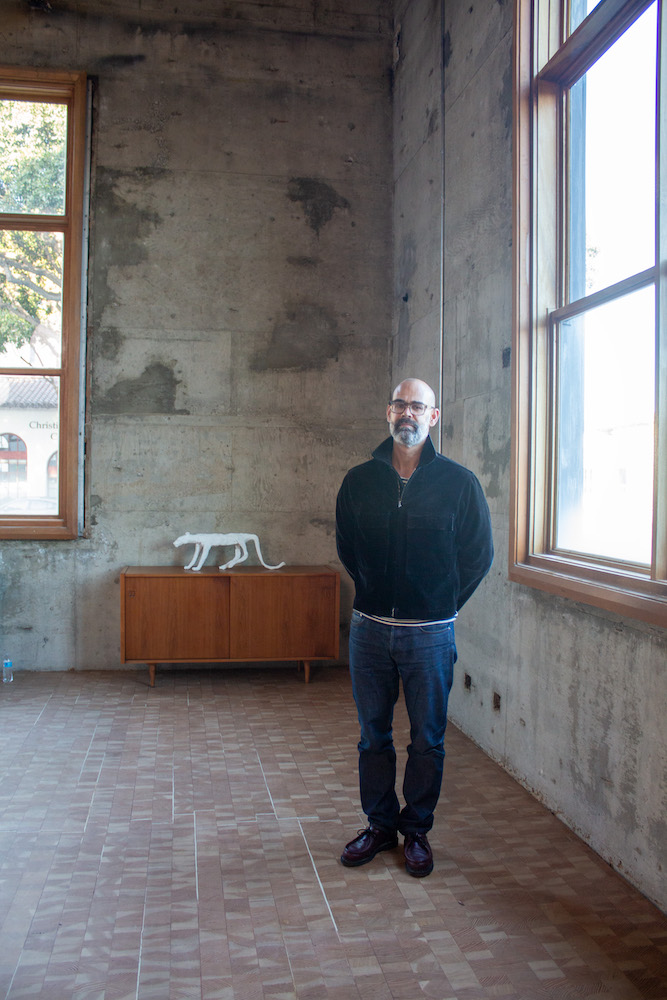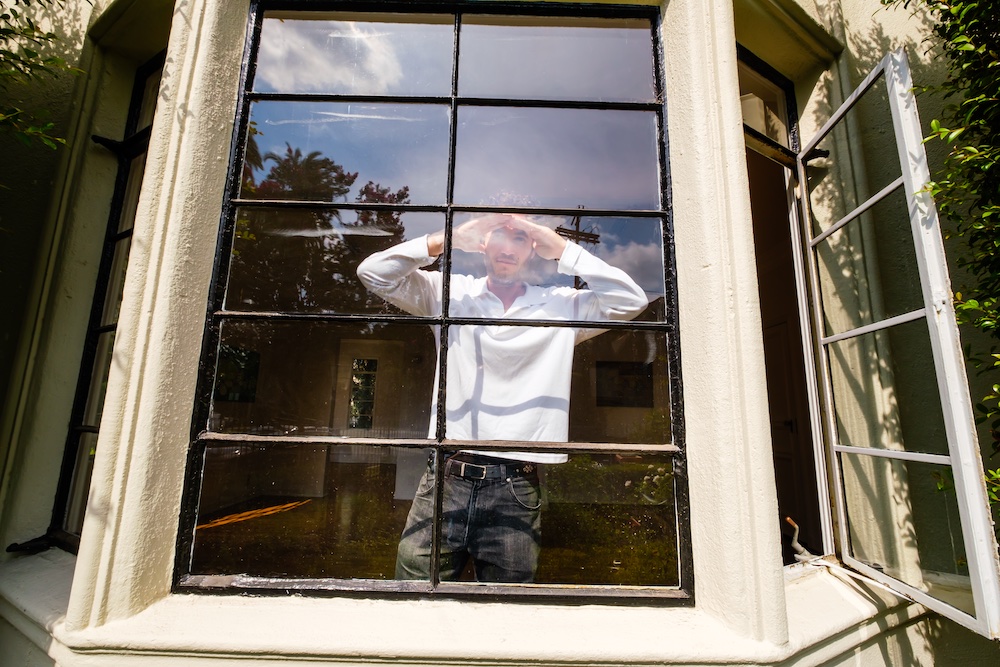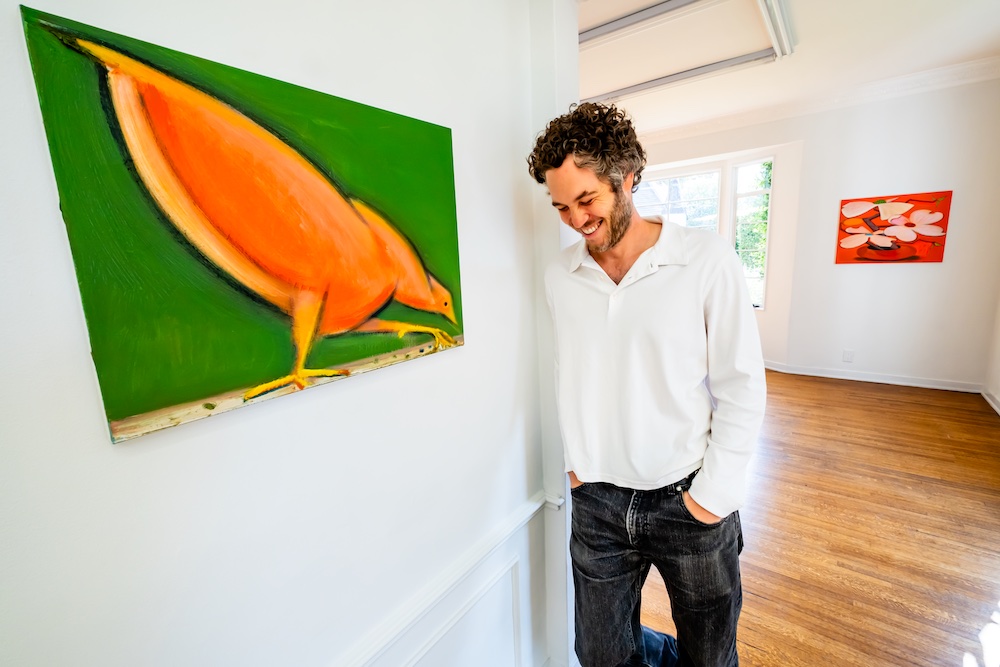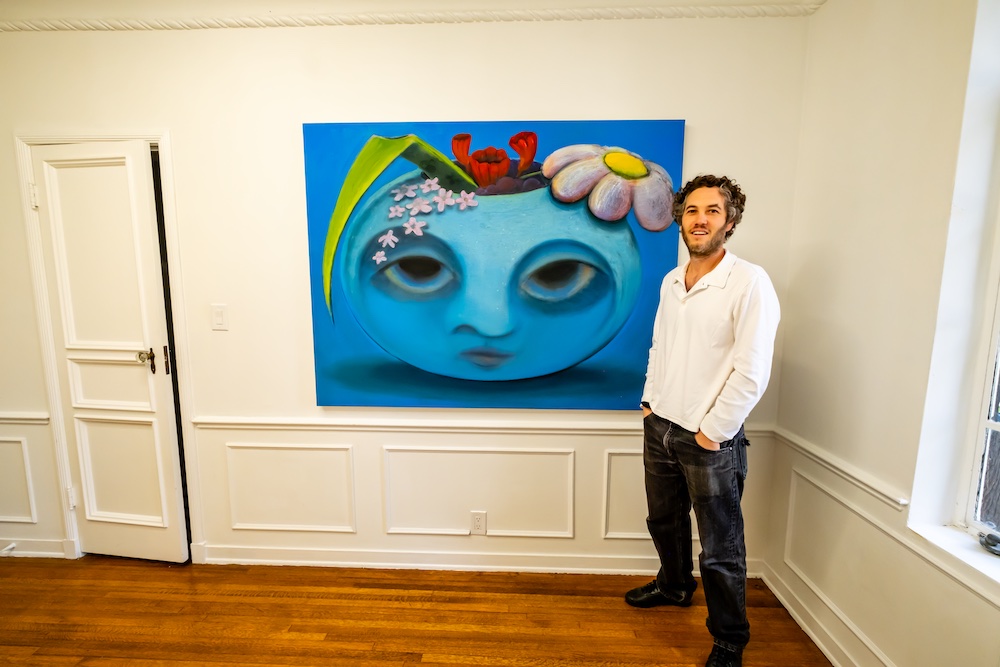Your cart is currently empty!
Tag: CASTLE
-

FAIR AND SQUARE
Post-Fair Brings Equitability to Santa MonicaLast week, during Los Angeles Art Week, I saw James Franco everywhere. I saw James Franco at Felix at the Hollywood Roosevelt, where the David Hockney-painted pool was closed because a man had had a heart attack inside it the day before. I saw James Franco at the Karma party at Ghengis Cohen, his trucker hat popping up behind a psychic and very beautiful astrologer. I saw James Franco at Frieze, taking in the valuable wall real estate at the sizable David Zwirner booth. But the first place I saw James Franco smile was at the inaugural Post-Fair in Santa Monica, as Theta gallery founder and director Jordan Barse took him through her exhibition of Tinseltown-themed paintings by Pictures Generation artist Nancy Dwyer. I smiled at the Post-Fair, too.
The Post-Fair, a little jewel box of a fair held at the landmark Santa Monica Post Office building, was founded by Mid-City gallerist Chris Sharp, a dealer with excellent taste and an aptronym for a surname. He decided to start his own fair for a simple reason: Frieze, where the price of a small booth starts at $35,000, is just too expensive. Participating in that fair, or even its somewhat less costly alternative, Felix, can knock out an emerging gallery like Sharp’s, whose business is four years old. He aimed for something more equitable than the established fairs, splitting the cost of renting the post office between 26 galleries (all showing single-artist presentations) for a flat rate of $6,000 each.
“We’re in a moment where things are so difficult,” he says. “Survival feels so precarious and the market’s so weak, so I just wanted to create something where participating in it wasn’t an existential threat to the gallery. Because a lot of the time, when you’re doing these big fairs it’s make or break, just because the costs are so high.”
“To use Marxist terminology,” he says, chuckling, “we’re seizing the means of production.” The name really works.

Image by Artillery staff. Sharp’s fellow gallerists met the idea with enthusiasm. He invited galleries ranging from decades-old, established institutions like Sprüth Magers and PPOW, to far younger galleries, like the Dimes Square-adjacent King’s Leap, and CASTLE, which opened in a Hancock Park apartment less than two years ago. Instead of constructing conventional booths, each gallery received equitable wall space, lending the fair the feeling of a group show. The 1938 building, sun-soaked with Art Deco moldings and worn stone, was a pleasure to move through, especially in comparison to the claustrophobic convention center at the Santa Monica Airport. Numerous guests commented on how nice the space smelled, like fresh cut wood.
“It’s a really beautiful space, and the flow is nice and pleasant,” says Barse. “I love the scale of it. It just feels very manageable, whereas many fairs can feel very overwhelming and exhausting, with layouts that make you feel trapped. But I think that people flow through quite naturally here without feeling pressured or rushed. You’re engaging visitors more easily, and they have time to stop and chat about the art.”
Eden Deering, director of PPOW—which showed Harry Gould Harvey IV’s storybook-like, eerie work—described the Post-Fair as “refreshingly human.”
“It avoided the often transactional feel of white-walled booths,” she says. “Instead, it offered a sense of discovery and connection.”
Between the low costs and minimal construction, Sharp purposefully created an environment where there’s “a lot less pressure” to make sales, enabling exhibitors to take more aesthetic risk. He opted to show work by the late German-Iraqi sculptor Lin May Saeed, centering a piece depicting a wide-eyed, nervous doe. Sharp says that, despite Saeed’s renown in Europe, she has no market in the United States, and he relished the opportunity to bring her to a wider audience.
“I actually really like art fairs,” he says. “A lot of people complain about them, but one of their great virtues is you get a lot of people in front of your work. At my gallery, I’m lucky if I get 300 people to visit the show over the course of the entire show. You do an art fair, and you get thousands of people. I mean, not like everyone’s going to look, but you’re still getting this really high volume of exposure for your artists. So this fair is a perfect context to be able to show work by Lin May Saeed, where if we don’t sell anything, it’s not a big deal.”

Chris Sharp. Photo by Artillery Staff. Sharp expected some amount of blowback from the powers that be at Frieze. But the devastating Los Angeles wildfires changed things. “My fair feels like it’s essentially somehow critical of the status quo, but the fires and the aftermath kind of created this really nice and unexpected solidarity among the entire art community,” he says. In 2025, attending LA Art Week was not just an excuse to take pictures of one’s friends’ art and enjoy a complimentary champagne in a lounge sponsored by a Swiss bank—instead, it became a way to both offer real, needed support to the city’s artists and art workers, and to blow off steam and have fun. People actually danced (and made out on the dance floor) at the Hop Louie party. Everyone needed to breathe, maybe even the James Francos of the world.
CASTLE founder Harley Wertheimer, who exhibited paintings by Victor Boullet at the Post-Fair (my favorite was of a charming little owl with red-rimmed eyes), says we need people coming to LA in the wake of such tragedy. “I don’t even think it’s a purely financial thing,” he says. “It’s also an energy thing. It’s a beautiful city filled with beautiful, hardworking people who work in the arts, and their work should be seen.”
Post-Fair’s spirit of experimentation leaked over into Art Week as a whole. The New York-based Uhaul Gallery, which shows work in a moving van, parked outside the Santa Monica Post Office after getting ejected from Frieze. There was an inflatable tube man, like the kind they display outside car dealerships, waving around atop the van, by artist Sam Keller. He was rendered in the stars and stripes of the American flag, with an erect, inflatable tube penis flopping in the breeze. He made me happy.
-

Capturing The Castle
LA’s Coolest Apartment Gallery Leaves the Living RoomHarley Wertheimer wears many hats: The native Angeleno is founder and director of CASTLE Gallery, as well as co-owner of Hollywood’s Stir Crazy café, and up until recently he was vice-president of A&R at Columbia Records. While Wertheimer got his professional start in the music industry, he began paying closer attention to visual art when he started lightly collecting in 2015. He’s not sure why art specifically captivated him, although collecting does run in the family: “My father has been into classic cars since he was a young kid pumping gas at the station on Fairfax on Sunset,” said Wertheimer: “As a kid I would hang out at his and his friend’s shop in West LA. I never caught the car bug, but they were very much art to him. And in my mind a collector is a collector is a collector, someone who lives and breathes their interests.”
Following in his father’s footsteps, Wertheimer approached collecting as an exercise in cultivating personal taste: “I wasn’t some massive collector, I just got works from galleries that I really loved and respected like Nonaka-Hill, Parker Gallery, and South Willard.” The first piece he acquired was a ceramic sculpture by Magdalena Suarez Frimkess (the subject of a current LACMA exhibition) from South Willard’s Ryan Conder, back when it was a store on Sunset over a decade ago. “It was this insanely soulful space, an art gallery masquerading as a clothing store. I can only imagine the amount of people it must have touched. I would go in there looking for clothes, and all of a sudden you were looking at these ceramics by Frimkess or Roy McMakin tables…It was this really approachable world that had the energy almost of a skate shop or music store.”
Now, some years on, Wertheimer’s space is the one where people congregate on a weekend afternoon. The gallery often comes up in discussions of who in LA is showing interesting work and whose program people are intrigued by. At a typical daytime CASTLE opening, you’ll find artists and collectors sipping espresso in the apartment gallery’s spacious courtyard, along with perhaps a few children and somebody’s dog. “I really want people to have a nice time and feel like they’ll see their friends at the opening,” said Wertheimer. “Not that it’s purely social, because it is very much about the art.”

Harley Wertheimer at Castle Gallery, 2024. Photos: Bob Coulter. CASTLE began in 2022 out of Wertheimer’s living room, joining the cascade of other Los Angeles “apartment galleries,” something of a tradition since the ‘90s. Said Wertheimer, “I had always thought that it was a really cool idea, especially after seeing Sam Parker’s gallery or Michael Werner in New York. It was burning in my brain as something that would be interesting if I was a different person.”
While a living room gallery has its appeal, there are also practical limitations. After two years of programming, Wertheimer decided to expand and took a lease on the downstairs apartment, which is the gallery’s current locale. When asked about the potential personal invasiveness of opening one’s house to the public, he tells me that he “never felt vulnerable” about it: “As soon as we decided it was a gallery, even though it was really a living room and dining room sandwiched between the bedroom and our kitchen, it became compartmentalized in my brain, like, ‘this is a gallery now.’ It almost didn’t feel like I was inviting people into my home… I felt a lot more vulnerable about taking a shot doing the shows than people actually being in the space.” Expanding to downstairs, however, became a necessity when he and his wife welcomed a child earlier this year. “There’s a reason that these domestic spaces often have a shelf life” says Wertheimer. “It can be really trying to have half of your home unusable for domestic life.”
Wertheimer’s program has been very much driven by the architecture and atmosphere of the gallery space itself. “I was definitely thinking about work that would shine in that space,” he said. “There are a lot of details, such as moldings, a big bookcase, my furniture. If works could hang out together, I think they would’ve been hanging out at a party in that apartment.” He says that “there definitely is an overarching aesthetic”, but he can’t quite put his finger on it. In this writer’s opinion, the abiding aesthetic leans towards the expressionistic and theatrical, and it tends to be small scale. As Wertheimer admits, he has a real but unintentioned penchant for tiny paintings.

Harley Wertheimer at Castle Gallery, 2024. Photos: Bob Coulter. Further CASTLE expansions are in the works: Wertheimer opened a new location this fall in the guard house of a long-vacant old art deco building once owned by Howard Hughes, a stone’s throw from Jeffrey Deitch. The space will open with an exhibition by Japanese artist Koji Nakano, which will run concurrently with an exhibition at Nonaka-Hill by Nakano’s wife, sculptor Miho Dohi.
When asked about the changing cultural landscape and the influx of galleries in Los Angeles, Wertheimer grows enthusiastic and says he can’t imagine how the city is going to look in ten years. “I am really curious. I pretty much drive around the city in a circle every day. I love to drive and I think in the car. It’s definitely different than the city I grew up in and it’s different than the one I moved back to in 2011. But if you’re really an LA person, you can find stuff you love in every neighborhood…” When it comes to neighborhoods, Wertheimer doesn’t play favorites. “I am in
Beverly Hills often, West Hollywood often, Silverlake often, Pasadena often. I’m in the water often, I am on the boardwalk often. There’s great stuff to get into all over the city; it would take a long time for all of that to erode. It does always seem like there’s room to dream here, space to try stuff out.”
